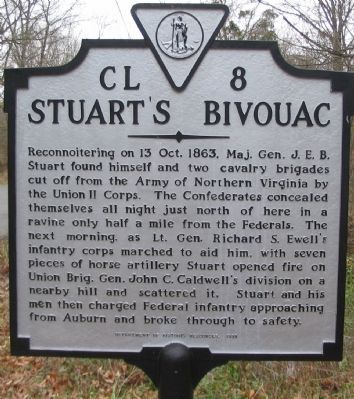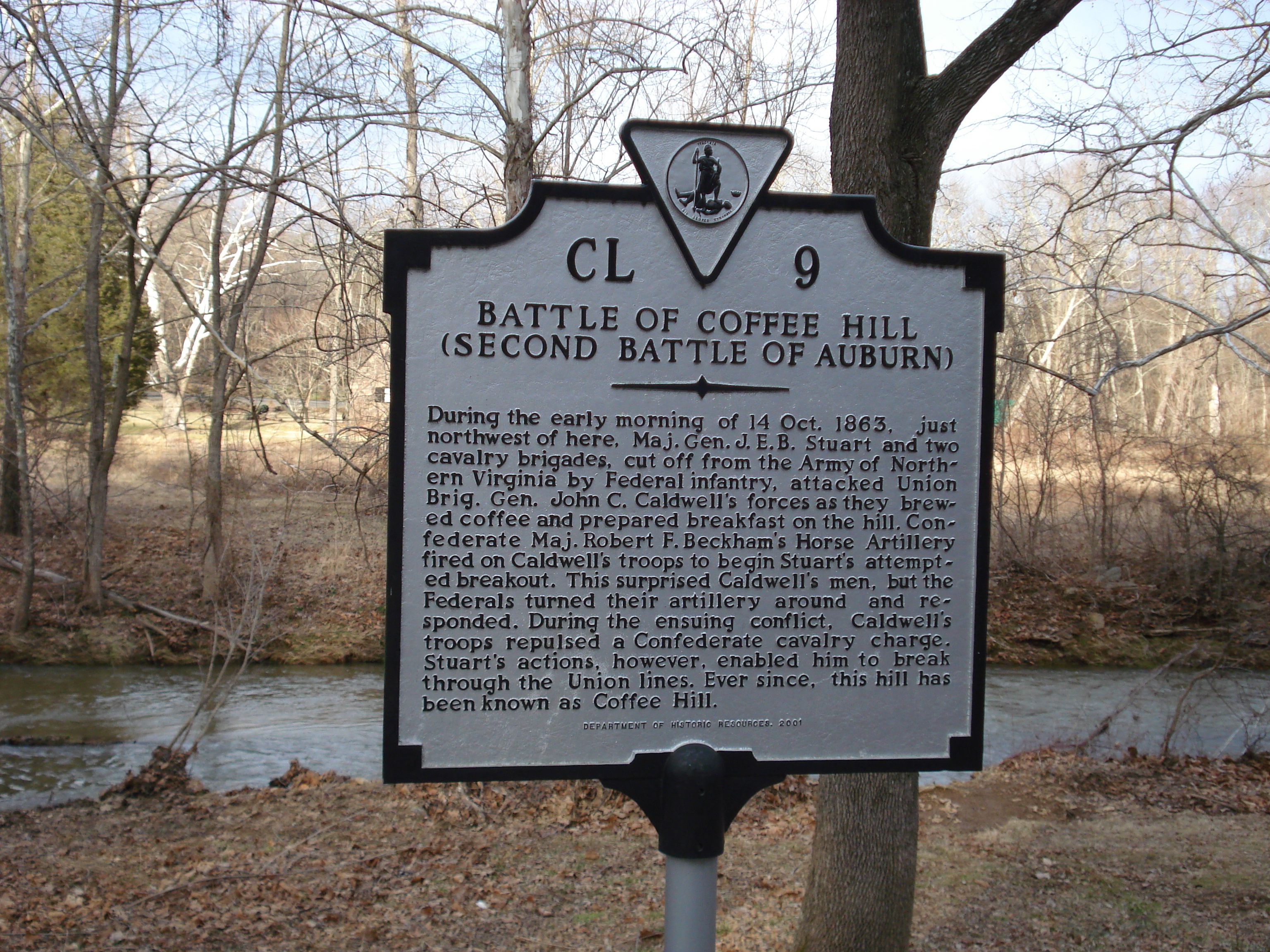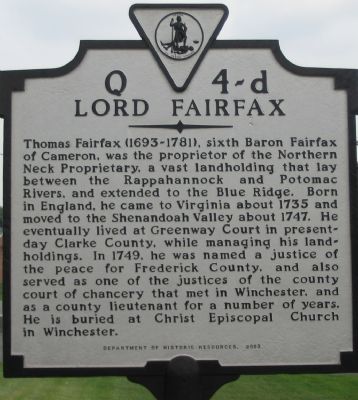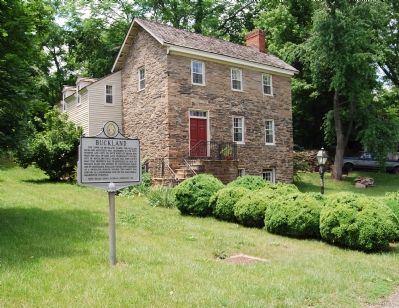
Buckland Tavern, on the Broad Run and VA29 [Lee Highway] in Gainesville, Virginia: one end of the Battle of Buckland Mills -- the other being Warrenton, Virginia.
Today is the 150th Anniversary of the Battle of Buckland Mills, Virginia. With 12,000 troopers involved, it has been described as the "Last large-scale Confederate cavalry victory in Virginia."

Map of the Bristoe Campaign, October-November 1863. Notice the Battle of Buckland Mills in the top center of the troop movements. [Drawn in Adobe Illustrator CS6 by Hal Jespersen. Graphic source file is available at http://www.cwmaps.com/]
This cavalry engagement was fought in the closing moves of the Bristoe Campaign. The failed attack of CS General A.P. Hill on the retreating Union Army of the Potomac at Bristoe Station on 14 October 1863 only confirmed the fact that US General Meade had succeeded in slipping away from the trap of CS General Robert E. Lee.
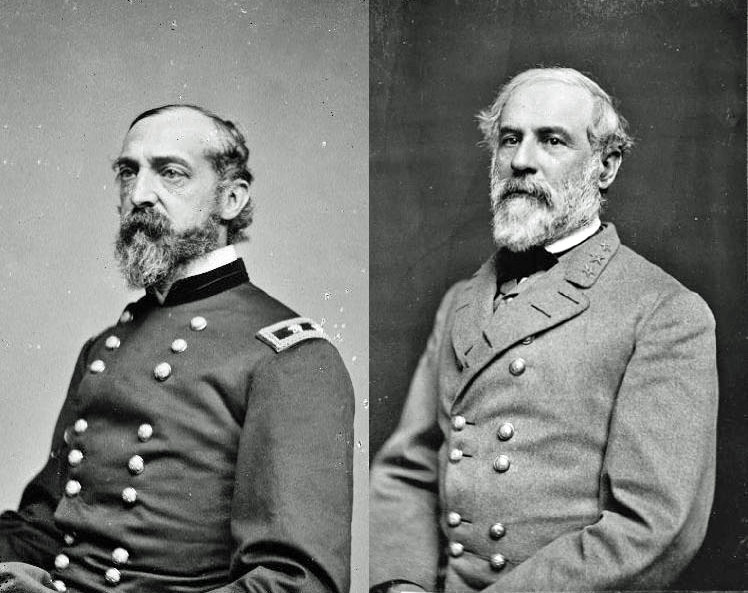
Rivals of the Bristoe Campaign: George Meade and Robert E. Lee.
Meade and the Union Army of the Potomac took up a strong position at the heights of Centreville, beyond the Bull Run. While Lee and his Confederate Army of Northern Virginia advanced as far as Manassas, it became clear that this was not a tenable position.
Robert E. Lee determined to withdraw to the safety of Virginia south of the Rappahannock River. The Southern cavalry of CS Major General J.E.B. Stuart would be tasked with screening this withdrawal.


On the same battlefield: George A. Custer & JEB Stuart.
In this context, on 19 October 1863, along the Warrenton Turnpike (now US29, Lee Highway), in the vicinity of the Prince William-Fauquier County line, a cavalry engagement took place: the Battle of Buckland Mills.
Initially, J.E.B. Stuart and his troopers, however -- the division of Wade Hampton -- fell back from Gainesville towards Warrenton and drew the rest of the Union cavalry of US General Kilpatrick into a trap. Stuart knew that his troopers would have the additional help of the division of CS General Fitzhugh Lee arriving from the south on the Union flank by way of what is now Rouges and Vint Hill Roads.
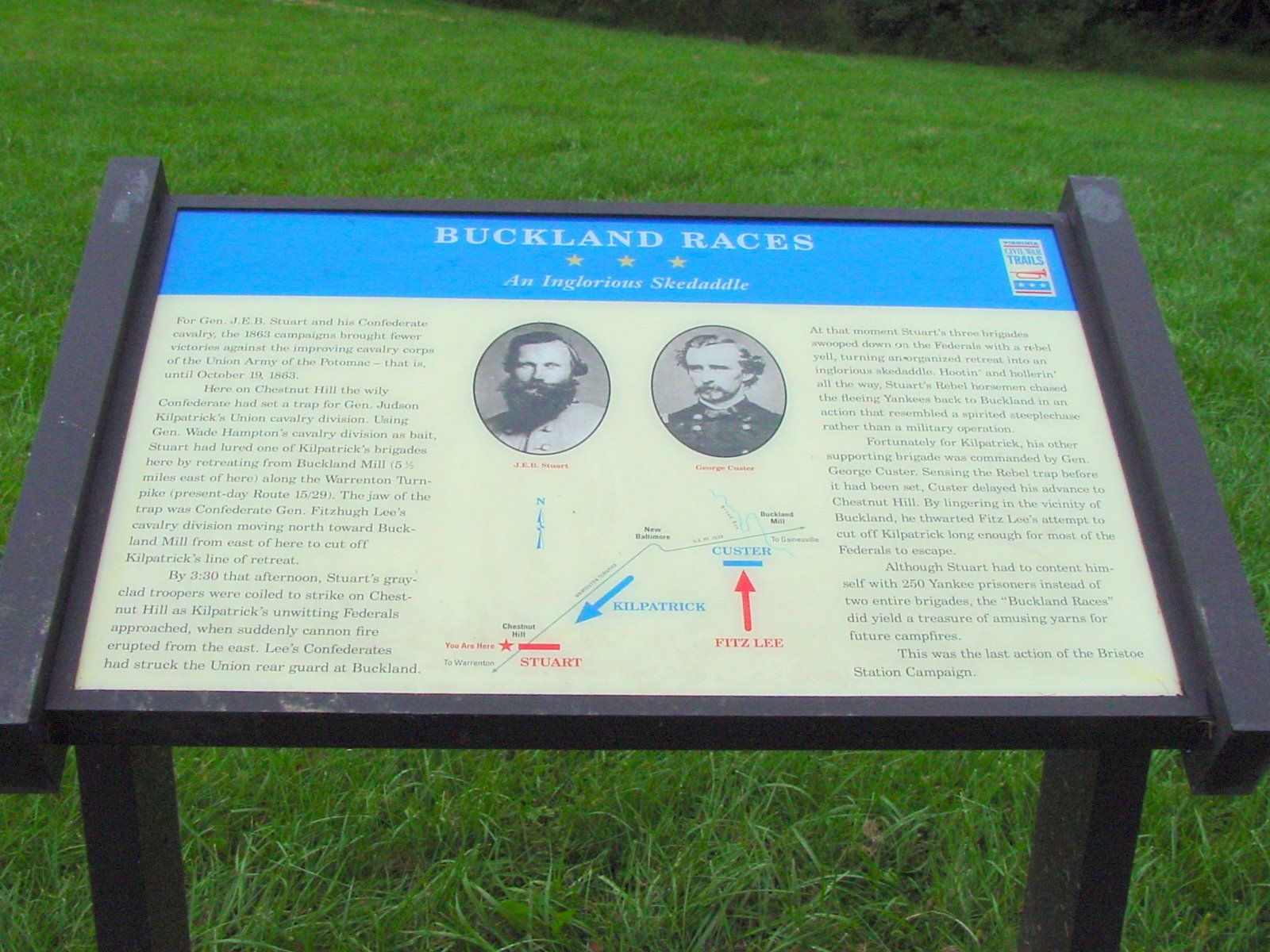
Historical Sign for the Battle of Buckland Mill (or "Buckland Races") located near Chestnut Hill at the park and ride lot on US29 just north of Warrenton, Virginia. [http://www.hmdb.org/marker.asp?marker=784]
So it was that the Southern cavalry fell back to the area of Chestnut Hill (the US29 [Lee Highway] and VA605 [Dumfries Rd.] intersection right outside Warrenton), when Stuart turned his force back and routed the Union troopers -- the brigade of US General Henry Davies, part of Kilpatrick's force. The pursuit was likened to fox hunting, and the Confederate cavalry referred to it as the Buckland Races.
The Union horsemen fled five miles to the area of Haymarket or Buckland Mills on the Broad Run, just inside Prince William County. Although the losses were relatively light, it was an embarrassing defeat for Kilpatrick and pushed the Union cavalry far from Robert E. Lee's army.
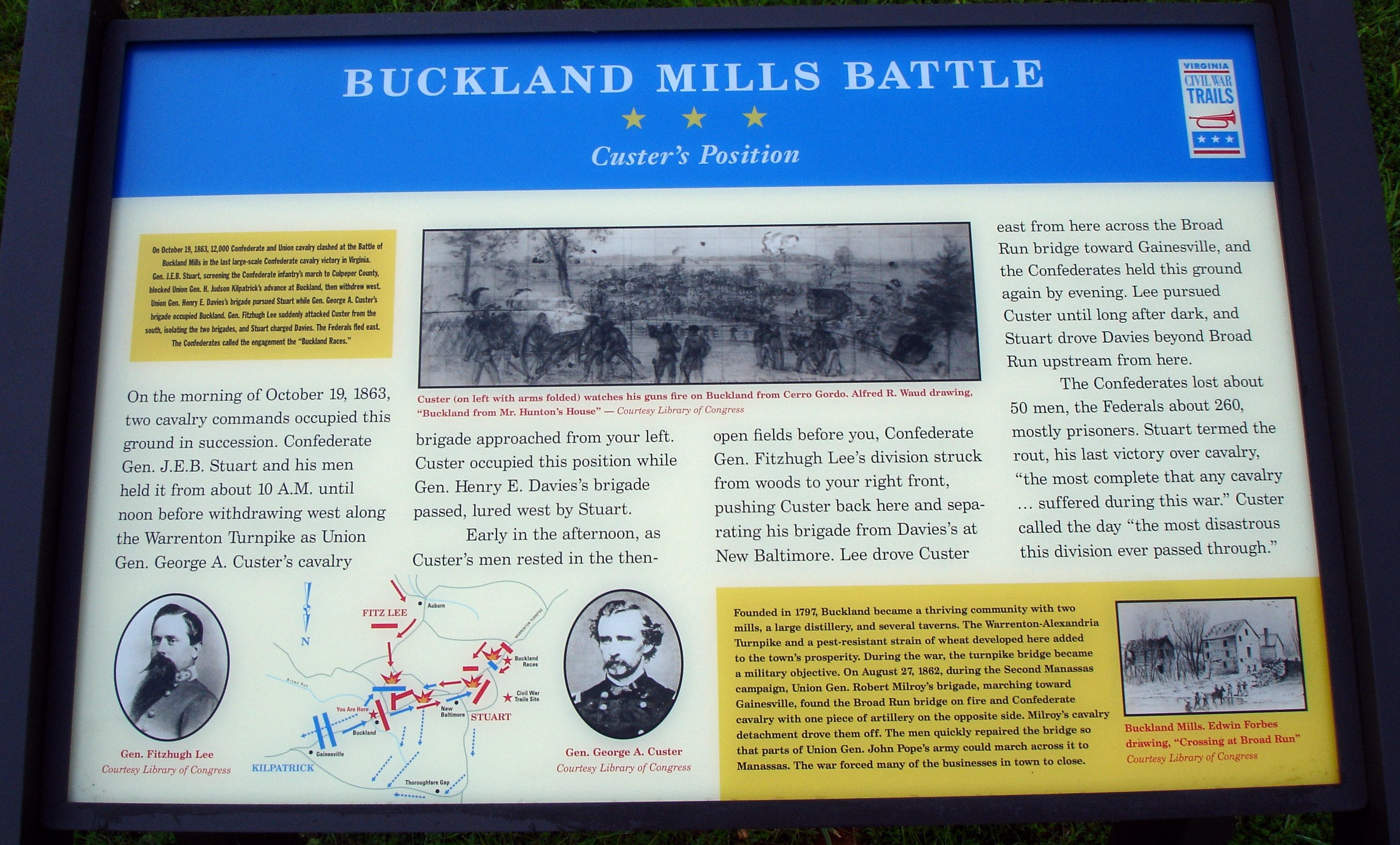
The Historical Sign at Buckland, the other end of the battle corridor along US29 (Lee Highway.) [http://www.hmdb.org/Marker.asp?Marker=19785]
Meanwhile, back near Buckland Mills, the force of CS General Fitzhugh Lee did arrive on the flank, but was blocked by the Union brigade of George A. Custer (of Little Bighorn fame!) along what is now VA215 [Vint Hill Rd.] near its intersection with US29 [Lee Highway] and in the vicinity of Buckland Mills. Custer and his brigade would be pushed back across the Broad Run, but remained intact.
Perhaps some of my good readers commute this battlefield each day?
This is a great summary from the Civil War Daily Gazette:
http://civilwardailygazette.com/2013/10/19/pell-mell-in-great-disorder-and-confusion-the-buckland-races/?fb_source=pubv1
Here is the NPS description:
http://www.cr.nps.gov/hps/abpp/battles/va042.htm
Live well!

